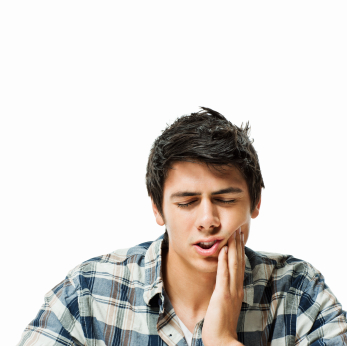Published reports show that the majority of mouth
injuries occur in such popular youth sports as baseball, basketball,
soccer, field hockey, softball and gymnastics, with one study finding that roughly three
times as many mouth injuries occur on the basketball court as on the
football field. Recent studies also report that oral and facial
injuries to female athletes exceed those in males. Most of these injuries could have been prevented with
the simple use of a mouth guard.

Injuries to the mouth and jaw - broken, cracked and lost teeth, jaw and joint fractures - are painful and hard to treat. Jaw and joint injuries often require surgery and general anesthesia, which requires hospitalization and wiring the jaw shut for 30 days to let the injury heal. A lost tooth must be re-implanted or false teeth made and fitted. Although easier to treat than a broken or fractured jaw, lost teeth are just as painful.
Treatment depends on injury type
In the event your child suffers a dental injury while playing sports, the Academy for Sports Dentistry recommends taking the following steps:
Knocked Out Tooth
- Avoid additional trauma to tooth while handling.
- Do not handle the tooth by the root, brush, scrub, or sterilize the tooth.
- If debris is on tooth, gently rinse with water.
- If possible, reimplant tooth and stabilize by biting down gently on the towel or handkerchief. Do only if athlete is alert and conscious.
- If unable to reimplant:
- Best: Place tooth in Hank's Balanced Saline Solution, i.e. "Save-a-tooth."
- 2nd best: Place tooth in milk.
- 3rd best: Wrap tooth in saline-soaked gauze.
- 4th best: Place tooth under athlete's tongue. Do this ONLY if athlete is conscious and alert.
- 5th best: Place tooth in a cup of water
- Get to dentist as soon as possible. Time is very important. A tooth reimplanted within 30 minutes has the highest degree of success rate. Thus, immediate transport to a dentist is critical.
Luxation (Tooth in socket, but wrong position) and Extruded tooth (Upper tooth hangs downs and/or lower tooth raised up)
- Reposition tooth in socket using firm finger pressure.
- Stabilize tooth by gently biting on towel or handkerchief.
- Transport immediately to dentist
Lateral displacement (Tooth pushed back or pulled forward)
- Try to reposition tooth using finger pressure.
- Athlete may require local anesthetic to reposition tooth; if so, stabilize tooth by gently biting on towel or handkerchief.
- Transport immediately to dentist
Intruded tooth (Tooth pushed into gum - looks short)
- Do nothing - avoid any repositioning of tooth.
- Transport immediately to dentist
Fracture (broken tooth)
- If tooth is totally broken in half, save the broken portion and bring to the dental office as described under Avulsion, Item 4.
- Stabilize portion of tooth left in mouth by gently biting on towel or handkerchief to control bleeding.
- Should extreme pain occur, limit contact with other teeth, air or tongue. Pulp nerve may be exposed, which is extremely painful to athlete.
- Immediately transport patient and tooth fragments to dentist
Trauma cards for distribution may be obtained through the Academy for Sports Dentistry at 800-273-1788 inside of U.S.A. and 217-227-3431 outside of U.S.A.
Source: Academy for Sports Dentistry
Most recently updated July 11, 2012








